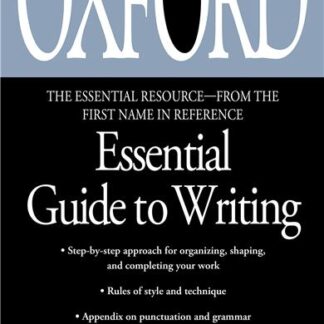Description
Fundamentals of Momentum, Heat, and Mass Transfer 7th Edition by James Welty, ISBN-13: 978-1119723547
[PDF eBook eTextbook]
- Publisher: Wiley; 7th edition (June 23, 2020)
- Language: English
- 784 pages
- ISBN-10: 111972354X
- ISBN-13: 978-1119723547
The field’s essential standard for more than three decades, Fundamentals of Momentum, Heat and Mass Transfer offers a systematic introduction to transport phenomena and rate processes. Thorough coverage of central principles helps students build a foundational knowledge base while developing vital analysis and problem solving skills. Momentum, heat, and mass transfer are introduced sequentially for clarity of concept and logical organization of processes, while examples of modern applications illustrate real-world practices and strengthen student comprehension. Designed to keep the focus on concept over content, this text uses accessible language and efficient pedagogy to streamline student mastery and facilitate further exploration.
Table of Contents:
1. Introduction to Momentum Transfer 1
1.1 Fluids and the Continuum 1
1.2 Properties at a Point 2
1.3 Point-to-Point Variation of Properties in a Fluid 5
1.4 Units 8
1.5 Compressibility 10
1.6 Surface Tension 11
2. Fluid Statics 15
2.1 Pressure Variation in a Static Fluid 15
2.2 Uniform Rectilinear Acceleration 18
2.3 Forces on Submerged Surfaces 19
2.4 Buoyancy 22
2.5 Closure 24
3. Description of a Fluid in Motion 25
3.1 Fundamental Physical Laws 25
3.2 Fluid-Flow Fields: Lagrangian and Eulerian Representations 25
3.3 Steady and Unsteady Flows 26
3.4 Streamlines 27
3.5 Systems and Control Volumes 28
4. Conservation of Mass: Control-Volume Approach 30
4.1 Integral Relation 30
4.2 Specific Forms of the Integral Expression 31
4.3 Closure 36
5. Newton’s Second Law of Motion: Control-Volume Approach 37
5.1 Integral Relation for Linear Momentum 37
5.2 Applications of the Integral Expression for Linear Momentum 40
5.3 Integral Relation for Moment of Momentum 46
5.4 Applications to Pumps and Turbines 48
5.5 Closure 52
6. Conservation of Energy: Control-Volume Approach 53
6.1 Integral Relation for the Conservation of Energy 53
6.2 Applications of the Integral Expression 59
6.3 The Bernoulli Equation 62
6.4 Closure 67
7. Shear Stress in Laminar Flow 68
7.1 Newton’s Viscosity Relation 68
7.2 Non-Newtonian Fluids 69
7.3 Viscosity 71
7.4 Shear Stress in Multidimensional Laminar Flows of a Newtonian Fluid 76
7.5 Closure 80
8. Analysis of a Differential Fluid Element in Laminar Flow 81
8.1 Fully Developed Laminar Flow in a Circular Conduit of Constant Cross Section 81
8.2 Laminar Flow of a Newtonian Fluid Down an Inclined-Plane Surface 84
8.3 Closure 86
9. Differential Equations of Fluid Flow 87
9.1 The Differential Continuity Equation 87
9.2 Navier–Stokes Equations 90
9.3 Bernoulli’s Equation 98
9.4 Spherical Coordinate Forms of the Navier–Stokes Equations 99
9.5 Closure 101
10. Inviscid Fluid Flow 102
10.1 Fluid Rotation at a Point 102
10.2 The Stream Function 105
10.3 Inviscid, Irrotational Flow about an Infinite Cylinder 107
10.4 Irrotational Flow, the Velocity Potential 109
10.5 Total Head in Irrotational Flow 112
10.6 Utilization of Potential Flow 113
10.7 Potential Flow Analysis—Simple Plane Flow Cases 114
10.8 Potential Flow Analysis—Superposition 115
10.9 Closure 117
11. Dimensional Analysis and Similitude 118
11.1 Dimensions 118
11.2 Dimensional Analysis of Governing Differential Equations 119
11.3 The Buckingham Method 121
11.4 Geometric, Kinematic, and Dynamic Similarity 124
11.5 Model Theory 125
11.6 Closure 127
12. Viscous Flow 129
12.1 Reynolds’s Experiment 129
12.2 Drag 130
12.3 The Boundary-Layer Concept 135
12.4 The Boundary-Layer Equations 136
12.5 Blasius’s Solution for the Laminar Boundary Layer on a Flat Plate 138
12.6 Flow with a Pressure Gradient 142
12.7 von Kármán Momentum Integral Analysis 144
12.8 Description of Turbulence 147
12.9 Turbulent Shearing Stresses 149
12.10 The Mixing-Length Hypothesis 150
12.11 Velocity Distribution from the Mixing-Length Theory 152
12.12 The Universal Velocity Distribution 153
12.13 Further Empirical Relations for Turbulent Flow 154
12.14 The Turbulent Boundary Layer on a Flat Plate 155
12.15 Factors Affecting the Transition from Laminar to Turbulent Flow 157
12.16 Closure 158
13. Flow in Closed Conduits 159
13.1 Dimensional Analysis of Conduit Flow 159
13.2 Friction Factors for Fully Developed Laminar, Turbulent, and Transition Flow in Circular Conduits 161
13.3 Friction Factor and Head-Loss Determination for Pipe Flow 164
13.4 Pipe-Flow Analysis 168
13.5 Friction Factors for Flow in the Entrance to a Circular Conduit 171
13.6 Closure 174
14. Fluid Machinery 175
14.1 Centrifugal Pumps 176
14.2 Scaling Laws for Pumps and Fans 184
14.3 Axial- and Mixed-Flow Pump Configurations 187
14.4 Turbines 187
14.5 Closure 188
15. Fundamentals of Heat Transfer 189
15.1 Conduction 189
15.2 Thermal Conductivity 190
15.3 Convection 195
15.4 Radiation 197
15.5 Combined Mechanisms of Heat Transfer 197
15.6 Closure 201
16. Differential Equations of Heat Transfer 203
16.1 The General Differential Equation for Energy Transfer 203
16.2 Special Forms of the Differential Energy Equation 206
16.3 Commonly Encountered Boundary Conditions 207
16.4 Closure 211
17. Steady-State Conduction 212
17.1 One-Dimensional Conduction 212
17.2 One-Dimensional Conduction with Internal Generation of Energy 218
17.3 Heat Transfer from Extended Surfaces 221
17.4 Two- and Three-Dimensional Systems 228
17.5 Closure 234
18. Unsteady-State Conduction 235
18.1 Analytical Solutions 235
18.2 Temperature-Time Charts for Simple Geometric Shapes 244
18.3 Numerical Methods for Transient Conduction Analysis 246
18.4 An Integral Method for One-Dimensional Unsteady Conduction 249
18.5 Closure 253
19. Convective Heat Transfer 254
19.1 Fundamental Considerations in Convective Heat Transfer 254
19.2 Significant Parameters in Convective Heat Transfer 255
19.3 Dimensional Analysis of Convective Energy Transfer 256
19.4 Exact Analysis of the Laminar Boundary Layer 259
19.5 Approximate Integral Analysis of the Thermal Boundary Layer 263
19.6 Energy- and Momentum-Transfer Analogies 265
19.7 Turbulent Flow Considerations 267
19.8 Closure 273
20. Convective Heat-Transfer Correlations 274
20.1 Natural Convection 274
20.2 Forced Convection for Internal Flow 282
20.3 Forced Convection for External Flow 288
20.4 Closure 295
21. Boiling and Condensation 297
21.1 Boiling 297
21.2 Condensation 302
21.3 Closure 308
22. Heat-Transfer Equipment 309
22.1 Types of Heat Exchangers 309
22.2 Single-Pass Heat-Exchanger Analysis: The Log-Mean Temperature Difference 312
22.3 Crossflow and Shell-and-Tube Heat-Exchanger Analysis 316
22.4 The Number-of-Transfer-Units (NTU) Method of Heat-Exchanger Analysis and Design 320
22.5 Additional Considerations in Heat-Exchanger Design 327
22.6 Closure 329
23. Radiation Heat Transfer 330
23.1 Nature of Radiation 330
23.2 Thermal Radiation 331
23.3 The Intensity of Radiation 333
23.4 Planck’s Law of Radiation 334
23.5 Stefan–Boltzmann Law 338
23.6 Emissivity and Absorptivity of Solid Surfaces 340
23.7 Radiant Heat Transfer Between Black Bodies 345
23.8 Radiant Exchange in Black Enclosures 352
23.9 Radiant Exchange with Reradiating Surfaces Present 353
23.10 Radiant Heat Transfer Between Gray Surfaces 354
23.11 Radiation from Gases 361
23.12 The Radiation Heat-Transfer Coefficient 363
23.13 Closure 366
24. Fundamentals of Mass Transfer 367
24.1 Molecular Mass Transfer 368
24.2 The Diffusion Coefficient 377
24.3 Convective Mass Transfer 397
24.4 Closure 398
25. Differential Equations of Mass Transfer 399
25.1 The Differential Equation for Mass Transfer 399
25.2 Special Forms of the Differential Mass-Transfer Equation 402
25.3 Commonly Encountered Boundary Conditions 404
25.4 Steps for Modeling Processes Involving Molecular Diffusion 407
25.5 Closure 416
26. Steady-State Molecular Diffusion 417
26.1 One-Dimensional Mass Transfer Independent of Chemical Reaction 417
26.2 One-Dimensional Systems Associated with Chemical Reaction 428
26.3 Two- and Three-Dimensional Systems 438
26.4 Simultaneous Momentum, Heat, and Mass Transfer 441
26.5 Closure 448
27. Unsteady-State Molecular Diffusion 449
27.1 Unsteady-State Diffusion and Fick’s Second Law 449
27.2 Transient Diffusion in a Semi-Infinite Medium 450
27.3 Transient Diffusion in a Finite-Dimensional Medium under Conditions of Negligible Surface Resistance 454
27.4 Concentration-Time Charts for Simple Geometric Shapes 462
27.5 Closure 466
28. Convective Mass Transfer 467
28.1 Fundamental Considerations in Convective Mass Transfer 467
28.2 Significant Parameters in Convective Mass Transfer 470
28.3 Dimensional Analysis of Convective Mass Transfer 473
28.4 Exact Analysis of the Laminar Concentration Boundary Layer 475
28.5 Approximate Analysis of the Concentration Boundary Layer 483
28.6 Mass-, Energy-, and Momentum-Transfer Analogies 488
28.7 Models for Convective Mass-Transfer Coefficients 495
28.8 Closure 497
29. Convective Mass Transfer Between Phases 498
29.1 Equilibrium 498
29.2 Two-Resistance Theory 501
29.3 Closure 516
30. Convective Mass-Transfer Correlations 517
30.1 Mass Transfer to Plates, Spheres, and Cylinders 518
30.2 Mass Transfer Involving Flow Through Pipes 526
30.3 Mass Transfer in Wetted-Wall Columns 527
30.4 Mass Transfer in Packed and Fluidized Beds 530
30.5 Gas–Liquid Mass Transfer in Bubble Columns and Stirred Tanks 531
30.6 Capacity Coefficients for Packed Towers 534
30.7 Steps for Modeling Mass-Transfer Processes Involving Convection 535
30.8 Closure 544
31. Mass-Transfer Equipment 545
31.1 Types of Mass-Transfer Equipment 545
31.2 Gas–Liquid Mass-Transfer Operations in Well-Mixed Tanks 547
31.3 Mass Balances for Continuous-Contact Towers: Operating-Line Equations 552
31.4 Enthalpy Balances for Continuous-Contacts Towers 560
31.5 Mass-Transfer Capacity Coefficients 561
31.6 Continuous-Contact Equipment Analysis 562
31.7 Closure 576
Nomenclature 577
Chapter Homework Problems P-1
Appendices
A. Transformations of the Operators ∇ and ∇2 to Cylindrical Coordinates A-1
B. Summary of Differential Vector Operations in Various Coordinate Systems A-4
C. Symmetry of the Stress Tensor A-7
D. The Viscous Contribution to the Normal Stress A-8
E. The Navier–Stokes Equations for Constant ρ and μ in Cartesian, Cylindrical, and Spherical Coordinates A-10
F. Charts for Solution of Unsteady Transport Problems A-12
G. Properties of the Standard Atmosphere A-25
H. Physical Properties of Solids A-28
I. Physical Properties of Gases and Liquids A-31
J. Mass-Transfer Diffusion Coefficients in Binary Systems A-44
K. Lennard–Jones Constants A-47
L. The Error Function A-50
M. Standard Pipe Sizes A-51
N. Standard Tubing Gages A-53
Index I-1
What makes us different?
• Instant Download
• Always Competitive Pricing
• 100% Privacy
• FREE Sample Available
• 24-7 LIVE Customer Support






























